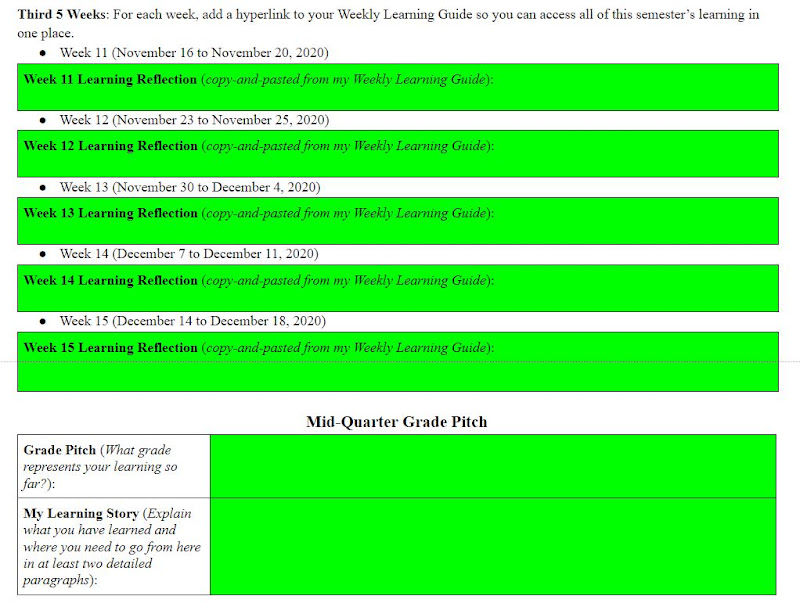Rubrics as Gradeless Feedback Guides

With an organized list of conflated standards and associated learning targets —along with a system for reporting in the gradebook —I now turn to rubrics. However, in a gradeless classroom, I found “rubric” to feel inadequate as a title, since we’re not specifically placing students on a scale. I’ve opted for the title “Feedback Guide.” This will also work into students’ weekly reflections and five-week (mid-quarter and quarterly) reflections and grade pitches . FORMER RUBRICS Originally inspired by Jennifer Gonzalez’s (@cultofpedagogy ) single-point rubric , my former standards-based rubrics looked like the following: As I read a student’s work (the above rubric was for a constructed response analyzing mood), I could put an X in the “I can” or the “I cannot yet” column next to each learning target or add more focused feedback in the form of sentences. Then, in the grade column, I’d assign an A, B, C, or F. My original post on this model can be found here . FEEDBACK GUIDES N...
